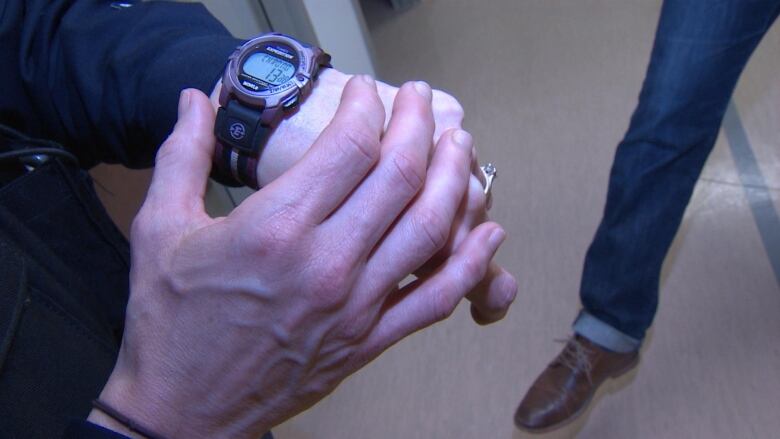How cops are catching high drivers
There's no breathalyzer for weed, so police use drug recognition evaluators

With legal marijuana coming soon in Canada, police departments across the country are facing a major challenge: what to do about people driving while high.
"I have concerns when anyone is impaired, or potentially impaired on the roadways," says Royal Newfoundland Constabulary Const. Karen Didham.
"Nobody has the right to make the decision to put your life, ormy life, at risk by driving."
Marijuana-impaired driving is already an issue police are dealing with and laying charges for. But with legalization just around the corner, more people than ever will be using the drug.
In jurisdictions that have already legalisedweed, the number of drivers impaired by marijuana is rising sharply.And that creates particular problems for police, because determining whether a driver is high is much harder than determining if they are drunk.
Watch the video below to see how it's done.
No breathalyzer for marijuana
There is a simple and universally accepted method for detecting drunk drivers: the breathalyzer. In Newfoundland Labrador, a reading of 0.08 or greater means you're legally impaired.
But there is no such detection device for marijuana, nor is there legislation to specify illegal levels of impairment.

A plethora of detection devices are currently in development. Some police forces including RCMP in the province are testing saliva swabs that can detect whether a person has recently consumed marijuana.
Some jurisdictions are setting legal limits on marijuana use and driving. In Washington state, drivers can have no more than 0.05 nanograms of THC, the activeingredient in marijuana, per millilitre of blood. But lawyers and drug policy experts have challenged the legitimacy ofsuch testing as a means of determining impairment.
And the results of a roadside saliva swab taken in this province are not admissible in court.Instead, determining whether a driver is high is the job of trained drug recognition evaluatorslikeDidham.

'We're not fishing for evidence'
Didhamsaidan impaired-driving investigation begins when police have reasonable suspicion that a driver is either drunk or high.
"It could be a call from the public, indicating that the driver was driving erratically," she said.
"It could be at a roadside checkpoint, or it could be a motor vehicle accident. So we would have to have a reason to have an interaction with the person."
When it comes to impairment by marijuana, Didham said there are telltale signs that police look for.
"Fresh odour or a stale odour, sometimes we'll see marijuana debris in the vehicle, certainly signs in their eyes such as dilated pupils, reddened eyes."

At that point, a drug recognition evaluator may ask the suspect to perform a standardized field sobriety test, either at roadside or at the police station.
RNC Headquarters in St. John's has an impaired driving exam room. A suspected impaired driver recently overdosed there, likely on fentanyl,during a drug-recognition evaluation.
The standardized field sobriety test is done in three parts.
"One is an eye evaluation, in which I determine how your eyes react to a certain stimulus and how I move that stimulus," Didham said.
"The other two tests would be a walk-and-turn and a one-leg stand. Those are divided attention tests, or psychophysical tests. And the premise behind it is that we ask you to do multiple things at the same time.
"You're multitasking when you're driving, so the psychophysical tests will mimic multitasking when you're driving."

At the end of the evaluation, Didham must make a determination whether the suspect is impaired, and what substance has caused the impairment. There is also a demand for a urine sample. The results of the urinanalysis, along with the evaluator's findings, will form the legal basis for a charge of impaired driving.
The process is less precise than a breathalyzer in determining alcohol impairment, but Didham said it's an accurate and objective way to combat drug-impaired driving.
"We're not fishing for evidence." she said. "We're not making things up."
"This is a standardized program. Every drug recognition evaluator does the evaluation the same way. The same criteria has to be met whether it's in Canada, the United States, they're using it in Australia, the U.K. we've trained people in China as well. So as long as everybody is doing the same thing, the subjectivity is taken away."













_(720p).jpg)


 OFFICIAL HD MUSIC VIDEO.jpg)
.jpg)



























































































